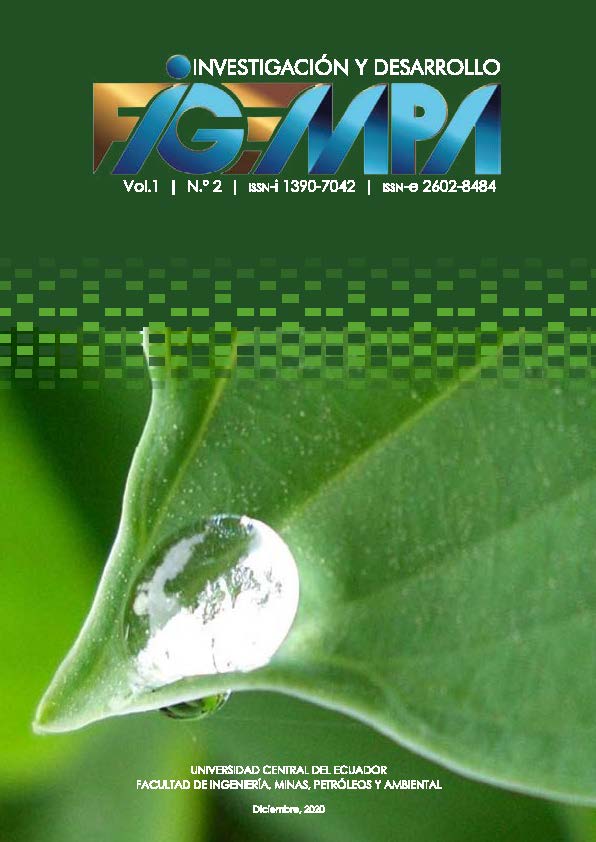Gold recovery by gravimetric concentration using Z-type concentrators in the Zamora-Ecuador mining district
Main Article Content
Abstract
Ecuador has a high potential for mining resources, which can be properly exploited to generate high economic returns for the benefit of the country, proof of this is the province of Zamora Chinchipe which is one of the 5 main Ecuadorian alluvial gold deposits, where gravimetric extraction methods are used. However, it is also evident the lack of technification in the mineral profit processes in this mining sector. For example, the use of the Z-type gravimetric concentrator is very common. This type of equipment has several drawbacks during its operation for mineral recovery. For the present study, samples were taken from nine profit plants of the sector in order to determine the efficiency of recovery of gold, the configuration of the different Z-type concentrators studied, operating parameters was analyzed, and the presence of mercury in the tailings. The results show that gold recoveries in the plants studied range from 12% to 98%, showing that the equipment presents disadvantages when the ore presents fine gold and therefore it is necessary to have alternatives that improve the recovery processes.
Downloads
Metrics
Article Details

This work is licensed under a Creative Commons Attribution-NonCommercial 4.0 International License.
References
Heredia, Y. (2015) Estudio para el montaje y puesta en marcha de una planta para el beneficio del mineral de oro en la zona de reserva especial minera del Municipio de Quinchía Risaralda. Universidad Tecnológica de Pereira, Pereira.
INIGEMM (2017) Hoja geológica Zamora. http://www.geoenergia.gob.ec/mapas-geologicos/
Marsden, J., y House, I. (2006) The chemistry of gold extraction (2.a ed.). Littleton, USA: Society for Mining, Metallurgy, and Exploration, Inc.
Navarro, M. (2017) Estudio de la recuperación de oro aluvial en concentrador falcon en la cooperativa minera Limata Ananea-Puno. Universidad Nacional Jorge Basadre Grohmann-Tacna, Tacna.
Pillajo, E. (2009) Evaluación del potencial aurífero aluvial en Ecuador. http://fungeomine.org/documentos/potencial_aurifero_aluvial_en_el_ecuador.pdf
Rodríguez, R. (2019) Ampliación de proceso bonanza e instalación de planta Rumicuri-Ecuador. Universidad Nacional de San Agustín de Arequipa, Arequipa.
Santos, D. (2015) Diseño de explotación de la grava aurífera existente en el área minera Durán (código 300050), Santa Rosa-El Oro. Universidad Central del Ecuador, Quito, Ecuador.
Stewart, J., Kerr, G., Prior, D., Halfpenny, A., Pearce, M., Hough, R., y Craw, D. (2017) Low temperature recrystallization of alluvial gold in paleoplacer deposits. Ore Geology Reviews, 88, 43-56.
Tupiza, J. y Guzmán, A. (2019) Tecnologías limpias para el aprovechamiento de depósitos detríticos (oro aluvial) ubicados en la provincia del Napo (Tesis de grado). Universidad Central del Ecuador, Quito, Ecuador.
Wills, B., Finch, J. (2016) Wills’ mineral processing technology (8.a ed., cap. 10). Gravity Concentration, 223-244.
Zuñiga, C. (2013) Diseño de explotación del depósito aurífero aluvial del río Cachaví, frente San Antonio, de la Empresa Nacional Minera ENAMI E.P. (Tesis de grado). Universidad Central del Ecuador, Quito, Ecuador.

